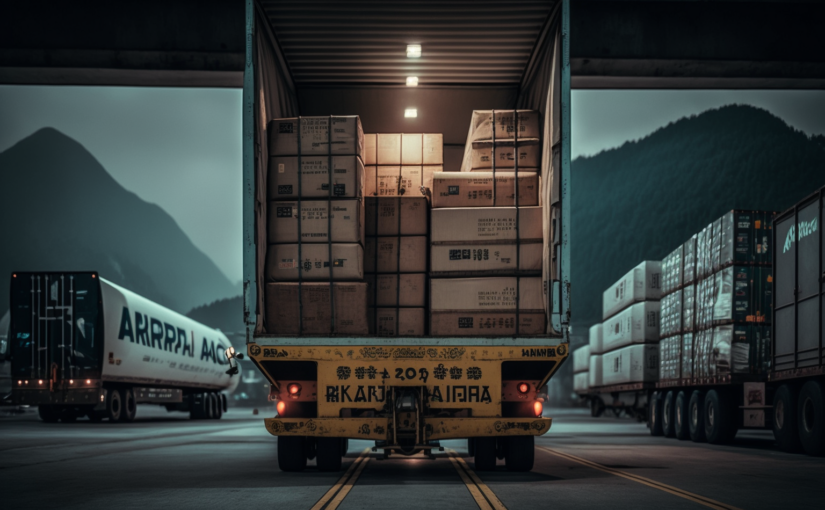In an increasingly competitive global market, businesses are looking for ways to cut costs while maintaining quality. Outsourcing logistics services for cargo shipping between China and the USA is one of the most effective ways to save money and streamline operations. In this article, we will explore the cost-saving benefits of outsourcing logistics services and discuss the various options available. We will also explore strategies for leveraging these services to maximize cost savings.
Introduction to Outsourcing Logistics Services
Logistics services encompass a broad range of activities, from warehousing and fulfillment to cargo shipping and distribution. By outsourcing these activities, businesses can gain access to experienced professionals who can provide expertise in transporting goods between countries. They can also take advantage of specialized software and technology to improve efficiency and reduce costs. Additionally, outsourcing logistics services can help reduce the risk of delays, as businesses can be assured that their products will arrive on time and in good condition.
When selecting a logistics service provider, it is important to consider a number of factors. These include the provider’s reputation, experience, and the types of services they offer. Businesses should also consider the provider’s rates and the terms of their contract. It is also important to ensure that the provider has the necessary expertise in the type of transportation necessary for the goods being shipped, such as air, land, or sea freight.
Finally, businesses should also consider the customer service offered by the provider. This includes the ease of communication, the ability to quickly respond to customer inquiries, and the availability of customer support. By taking the time to evaluate the provider and their services, businesses can ensure they select a provider that meets their needs and provides the best value for their money.
Overall, outsourcing logistics services can be a great way for businesses to save time and money, while still ensuring that their products are delivered safely and on time. By selecting an experienced and reputable provider, businesses can rest assured that their products will arrive at their destination in perfect condition.
Benefits of Outsourcing Logistics Services
- One of the primary benefits of outsourcing logistics services is access to experienced professionals who can provide expertise in transporting goods between countries. These professionals can help ensure that goods are handled in an efficient and cost-effective manner, while still ensuring that they arrive in perfect condition. Additionally, outsourcing logistics services can help reduce the risk of delays, as businesses can be assured that their products will arrive on time and in good condition.
- One of the key advantages of outsourcing logistics services is cost savings. By selecting a provider with competitive rates and by leveraging specialized software and technology, businesses can reduce their transportation costs significantly. Additionally, businesses can reduce their overhead costs by not having to hire and manage their own in-house staff.
Outsourcing logistics services can also help businesses improve customer service. By having access to experienced professionals, businesses can quickly respond to customer inquiries and provide timely and accurate information. Additionally, businesses can take advantage of the provider’s customer support services, ensuring that customers receive the help they need in an efficient and timely manner.
Outsourcing logistics services can be a great way for businesses to save time and money, while still ensuring that their products are delivered safely and on time. By selecting an experienced and reputable provider, businesses can rest assured that their products will arrive at their destination in perfect condition.
Cost-Saving Benefits of Outsourcing Logistics Services
One of the primary benefits of outsourcing logistics services is cost savings, as evidenced by a study conducted by the Massachusetts Institute of Technology (MIT). According to the study, businesses that outsourced logistics services saw an average reduction of 25% in their overhead costs, as well as an improved delivery time and a more reliable shipping process. Additionally, outsourcing can reduce overhead costs associated with warehousing, transportation, and other aspects of the logistics process. With outsourced logistics services, businesses are able to focus on their core business operations, freeing up resources and allowing them to remain competitive in the global market.
Additionally, outsourcing logistics services can provide access to a larger network of services and resources. By utilizing the services of a logistics provider, businesses can benefit from a more comprehensive network of suppliers, shippers, and transportation providers. This allows businesses to access the most cost-effective solutions for their cargo shipping needs. Additionally, outsourcing logistics services can provide access to more sophisticated technology that can streamline and automate various aspects of the shipping process.
Finally, outsourcing logistics services can provide businesses with access to a more reliable and efficient shipping process. A logistics provider can ensure that all shipments are delivered on time and that the necessary documents are processed in a timely manner. This can help businesses avoid costly delays and disruptions in their supply chain.
Overall, outsourcing logistics services can provide businesses with a number of cost-saving benefits. By leveraging the services of a logistics provider, businesses can reduce overhead costs, access a larger network of services and resources, and benefit from a more reliable and efficient shipping process. By utilizing these cost-saving benefits, businesses can remain competitive in the global market.
Strategies for Realizing Maximum Cost-Savings when Outsourcing Logistics Services
Here are some of the key strategies to help businesses realize maximum cost savings when outsourcing logistics services:
- Research Your Options: It is important to research potential logistics providers and compare services, prices, and customer service. This will help to ensure that you are getting the most cost-effective solution for your business.
- Negotiate for Better Rates: Once you have identified a few potential providers, it is important to negotiate for better rates. Make sure to ask about discounts, bulk pricing, and any other cost-saving initiatives they may be offering.
- Leverage Technology: Technology can be a powerful tool to help streamline operations and reduce costs. Look for providers that use advanced technology to ensure efficient and cost-effective logistics services.
- Monitor Logistics Performance: It is important to monitor the performance of your logistics provider to ensure that the services are meeting your expectations. Regularly review performance metrics to ensure that costs are being minimized and operations are running smoothly.
By following these strategies, businesses can maximize cost-savings and ensure efficient operations when outsourcing logistics services. Also, we would like to advise you to read our article, where we conducted an analysis of the efficiency of cargo transportation from China to the United States, taking into account the simplification of trade procedures.
FAQ
The benefits of outsourcing logistics services include access to experienced professionals, cost savings, improved customer service, and reduced overhead costs.
Businesses can use strategies such as researching their options, negotiating for better rates, leveraging technology, and monitoring logistics performance to realize maximum cost-savings when outsourcing logistics services.
Businesses should consider factors such as the provider’s reputation, experience, the types of services they offer, their rates, and the terms of their contract. Additionally, businesses should also consider the provider’s customer service and the expertise they have in the type of transportation needed for the goods being shipped.



